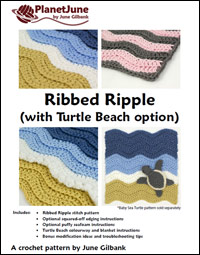
Today’s PlanetJune Story comes from Dr Domino Joyce, an evolutionary biologist by day and crocheter by night, who found a novel way to use amigurumi to educate children (and adults) about evolution! I’ll let Domino explain: I’m an evolutionary biologist at the University of Hull, UK and I’ve wanted to learn to crochet for ages. […]

















